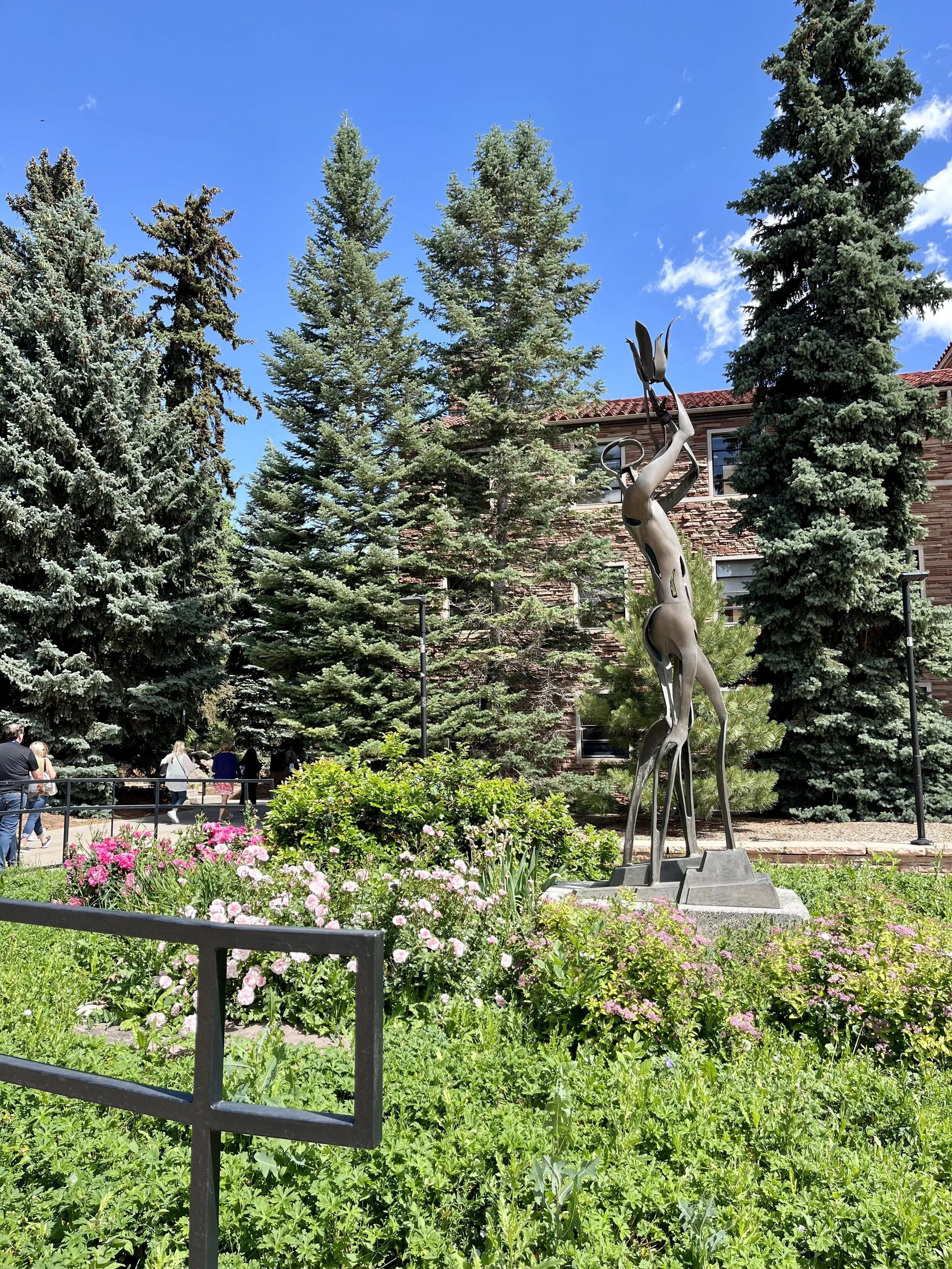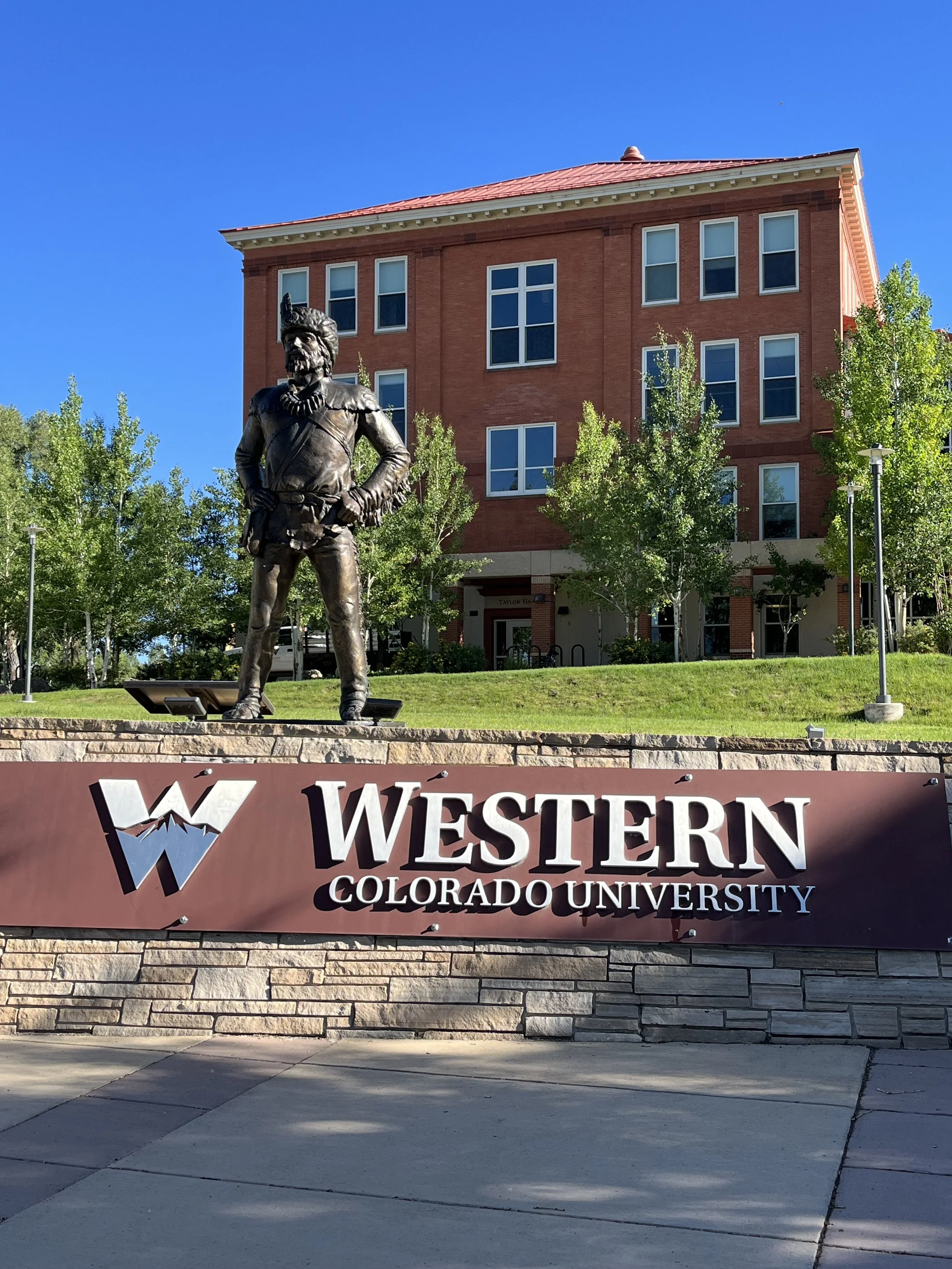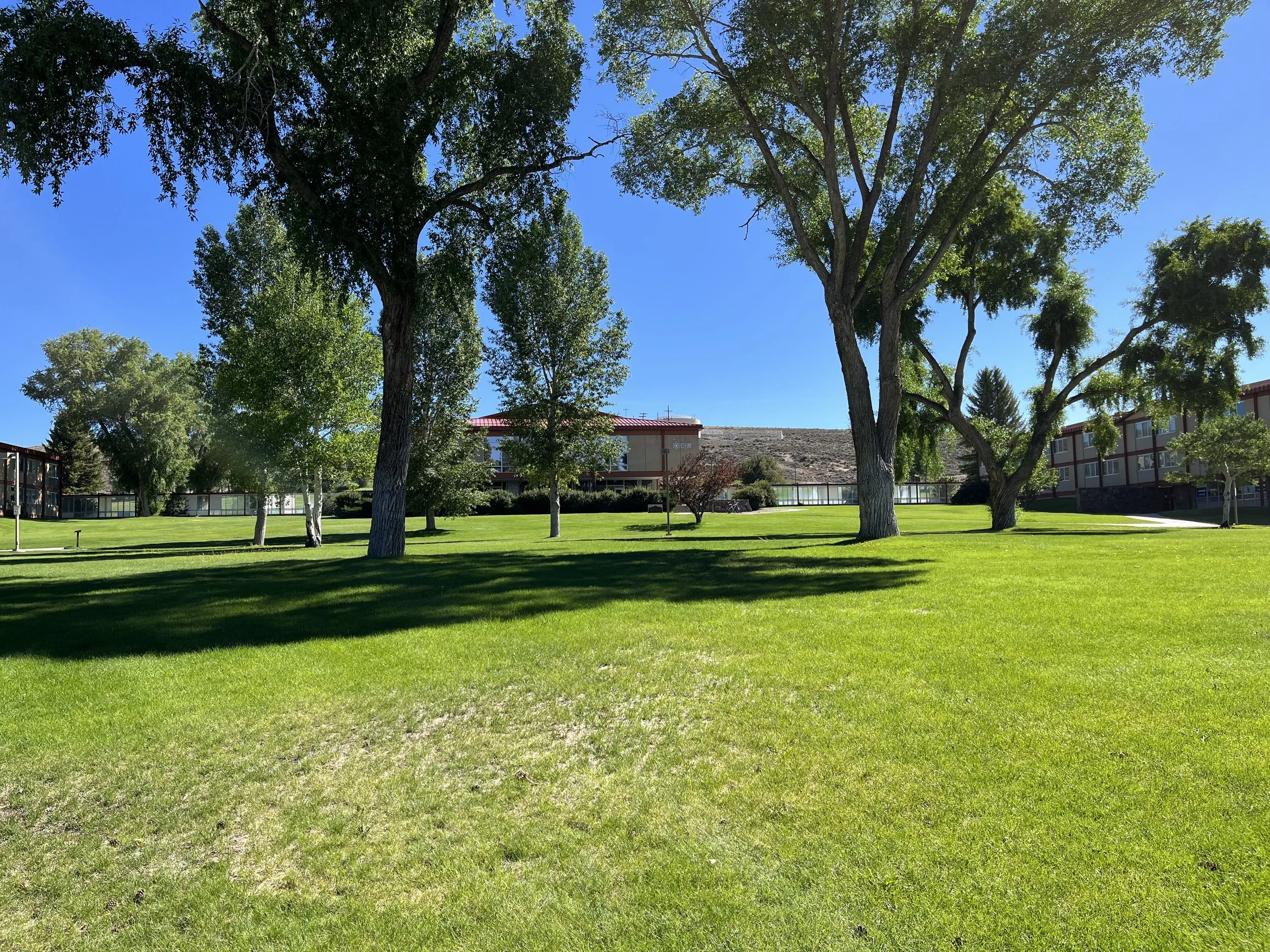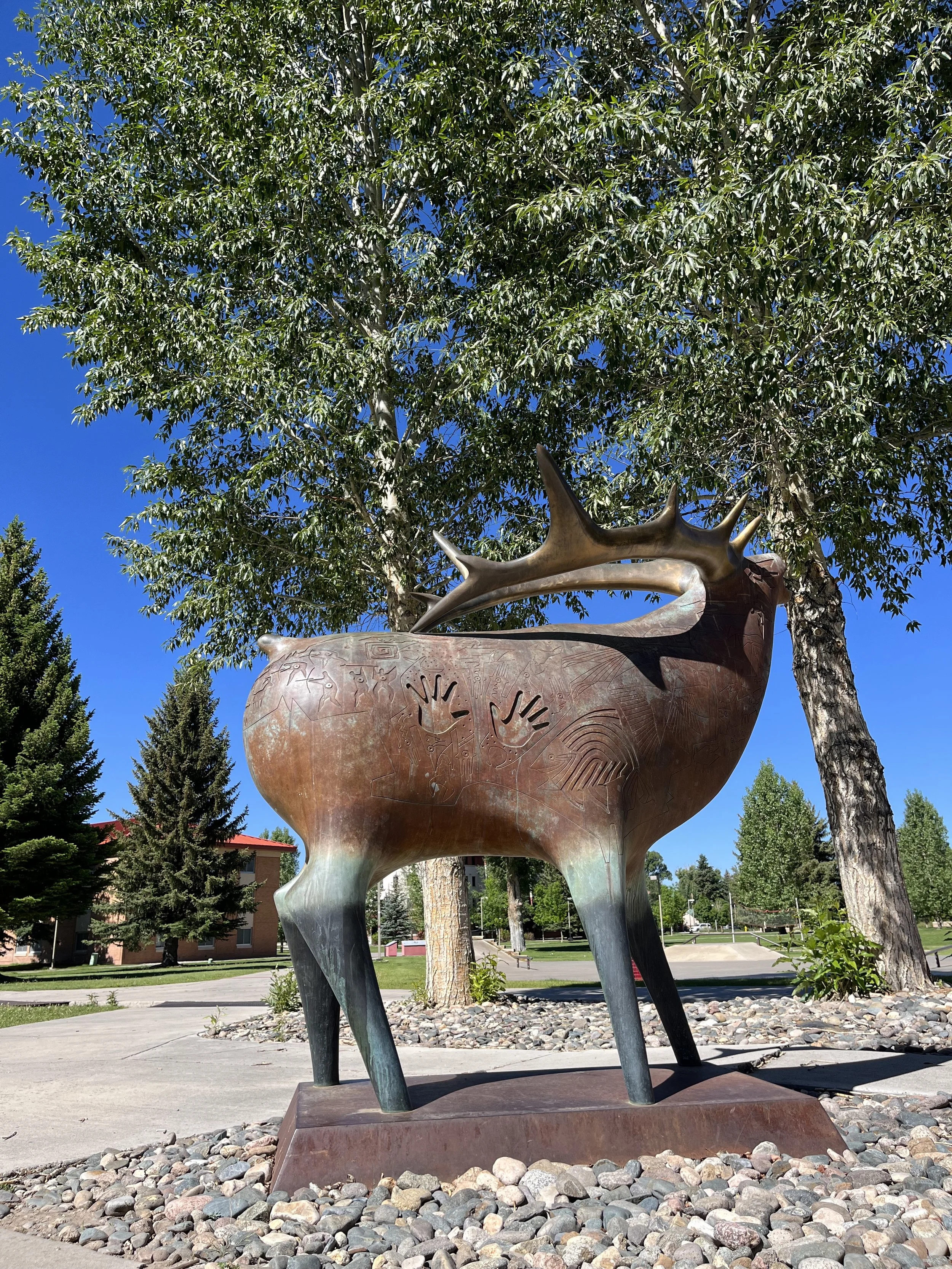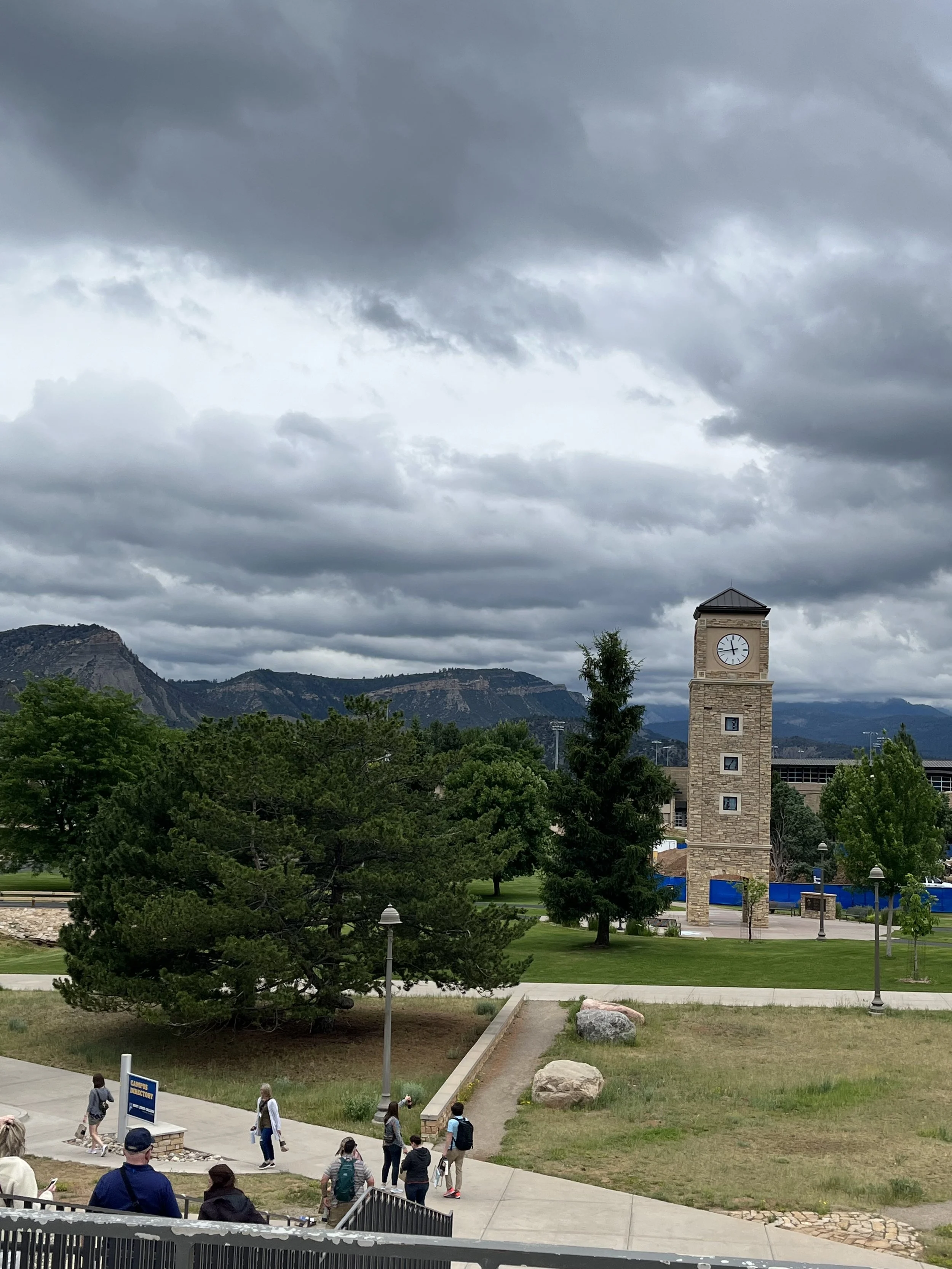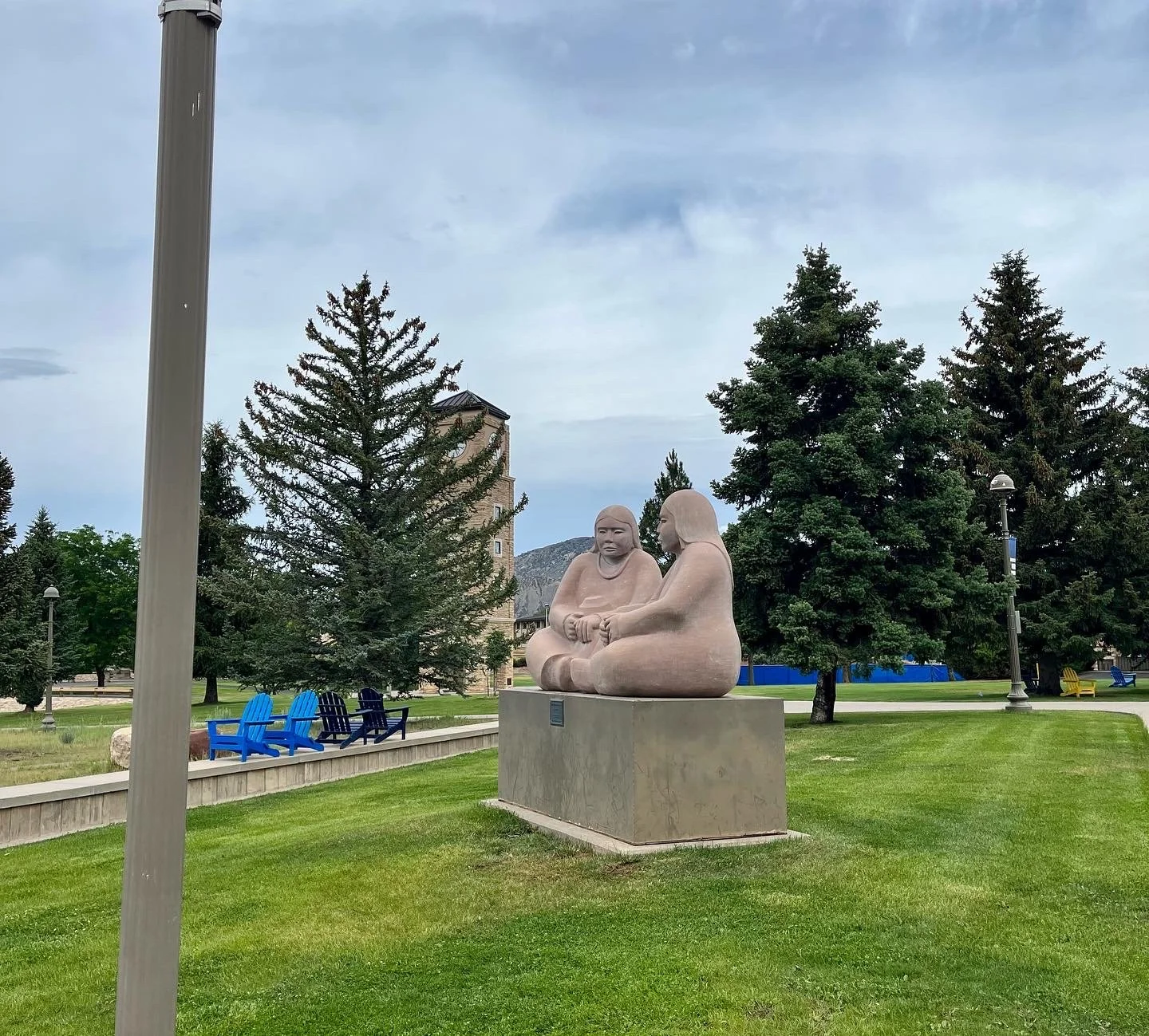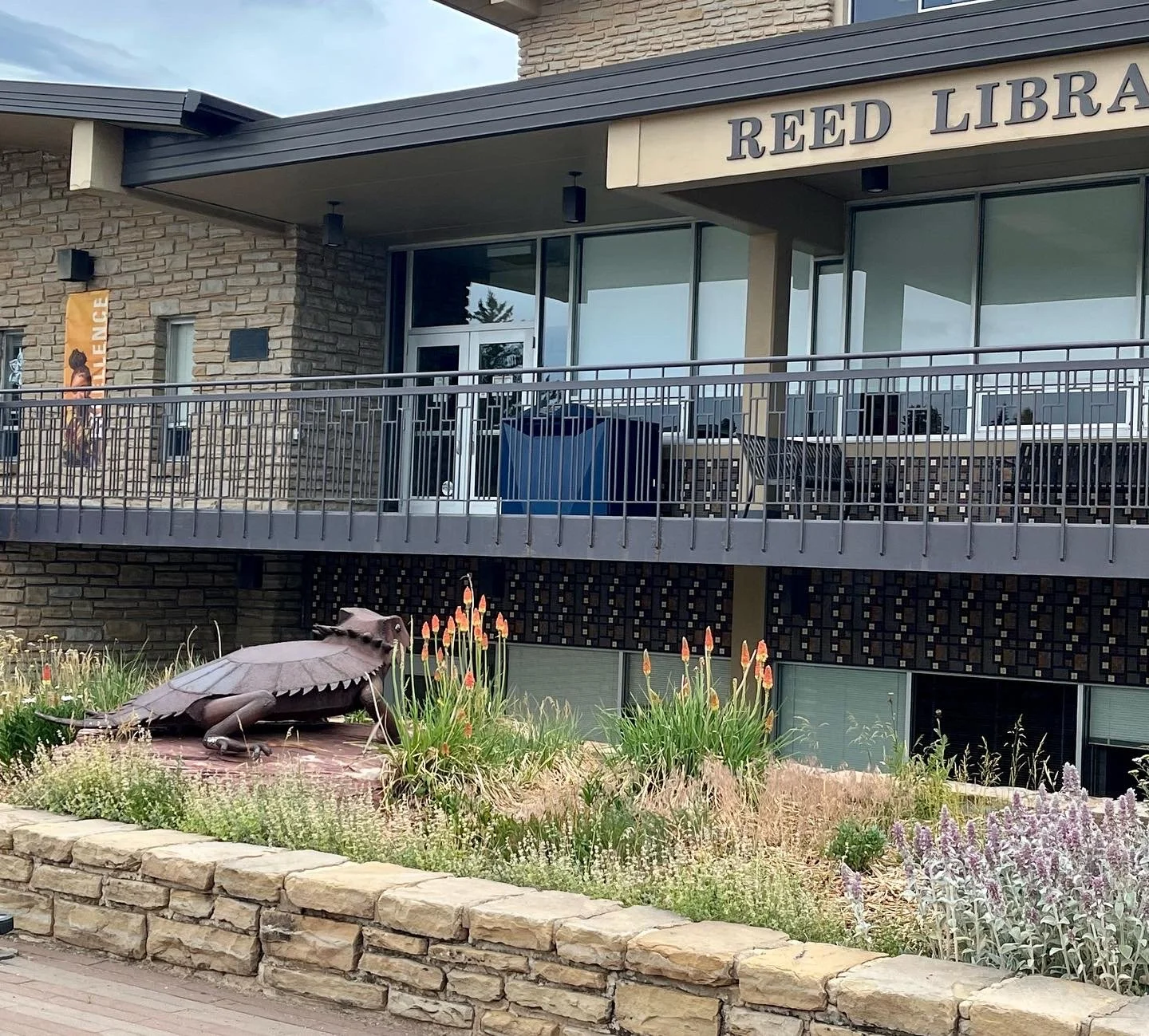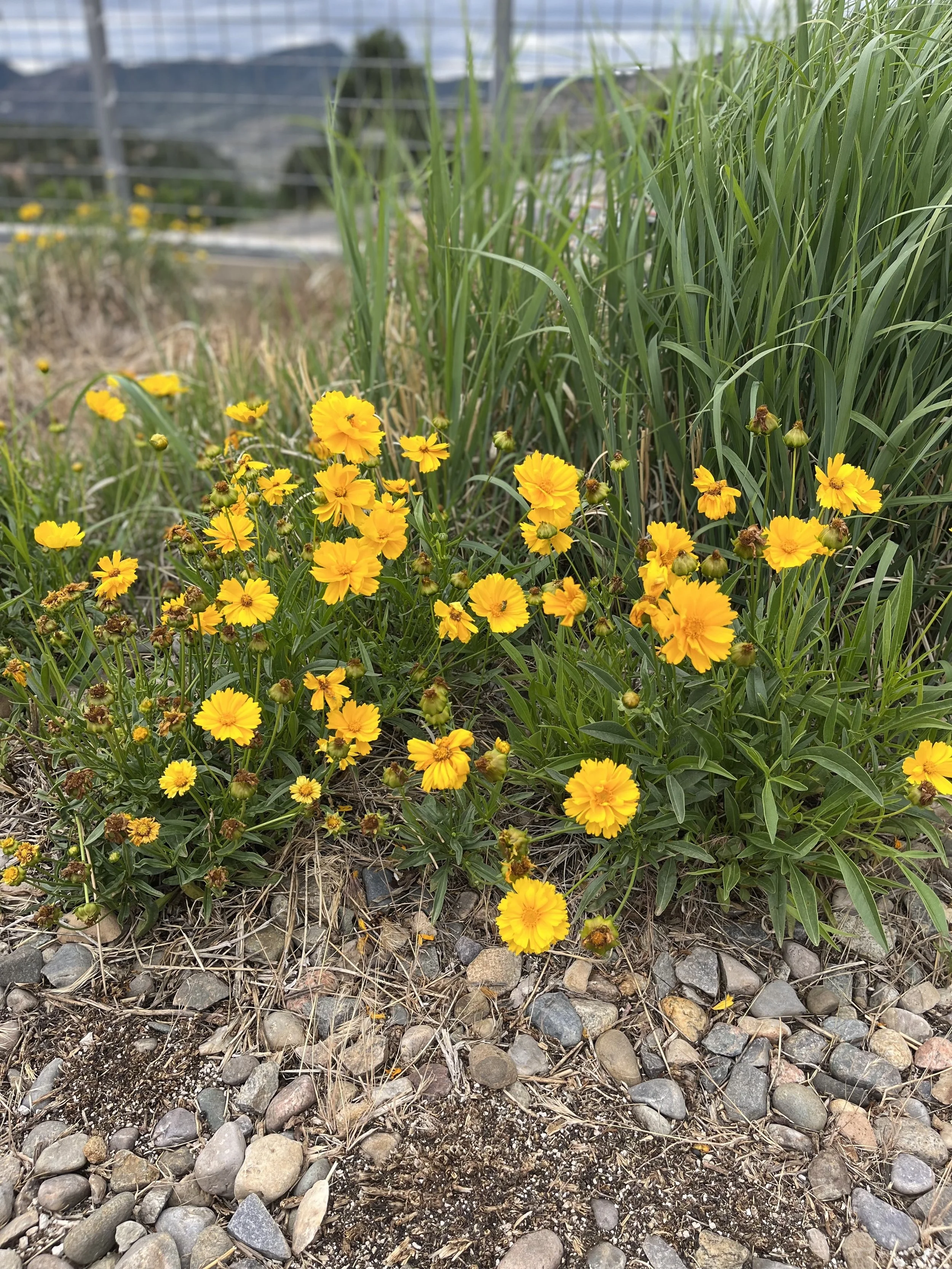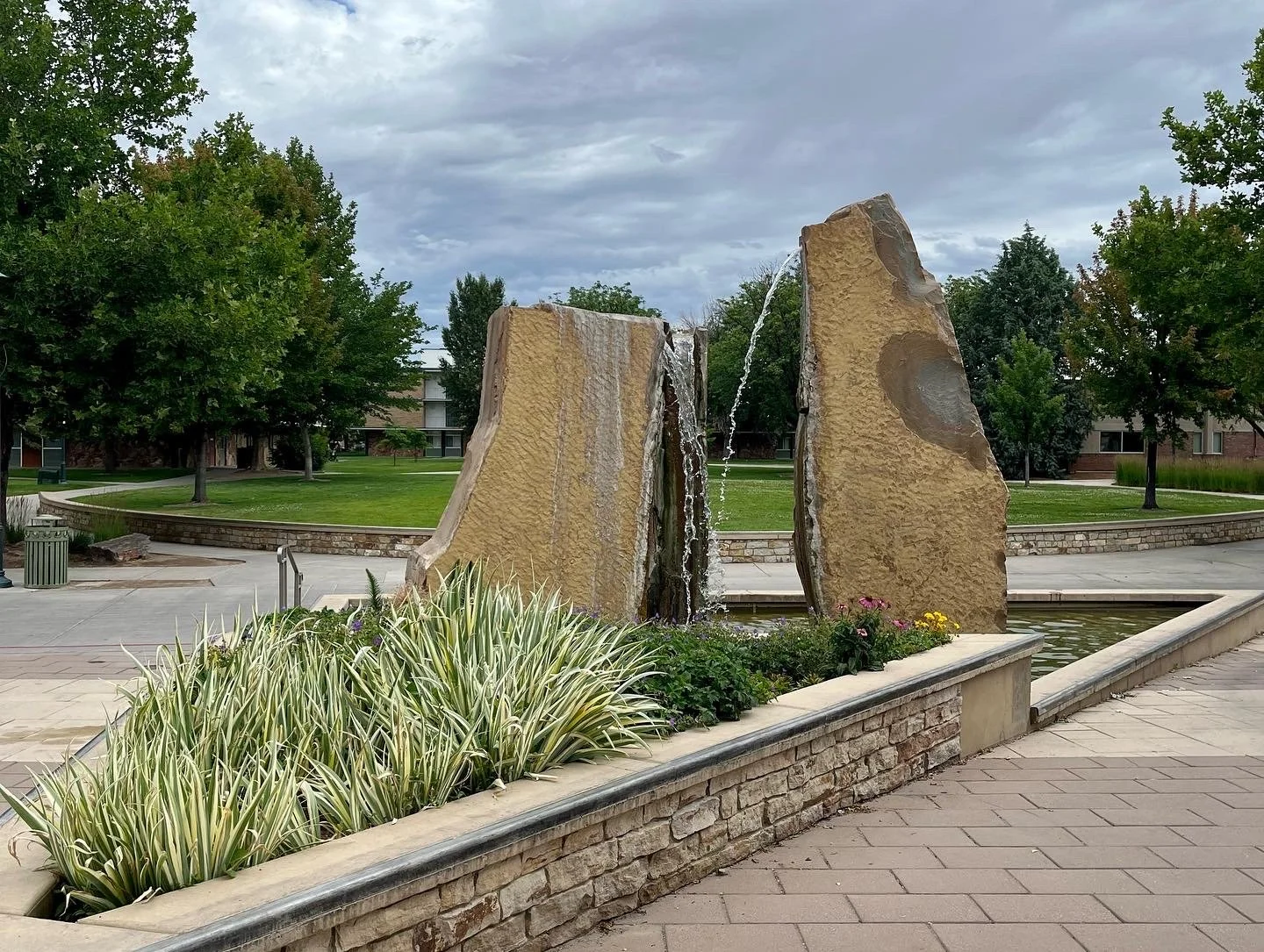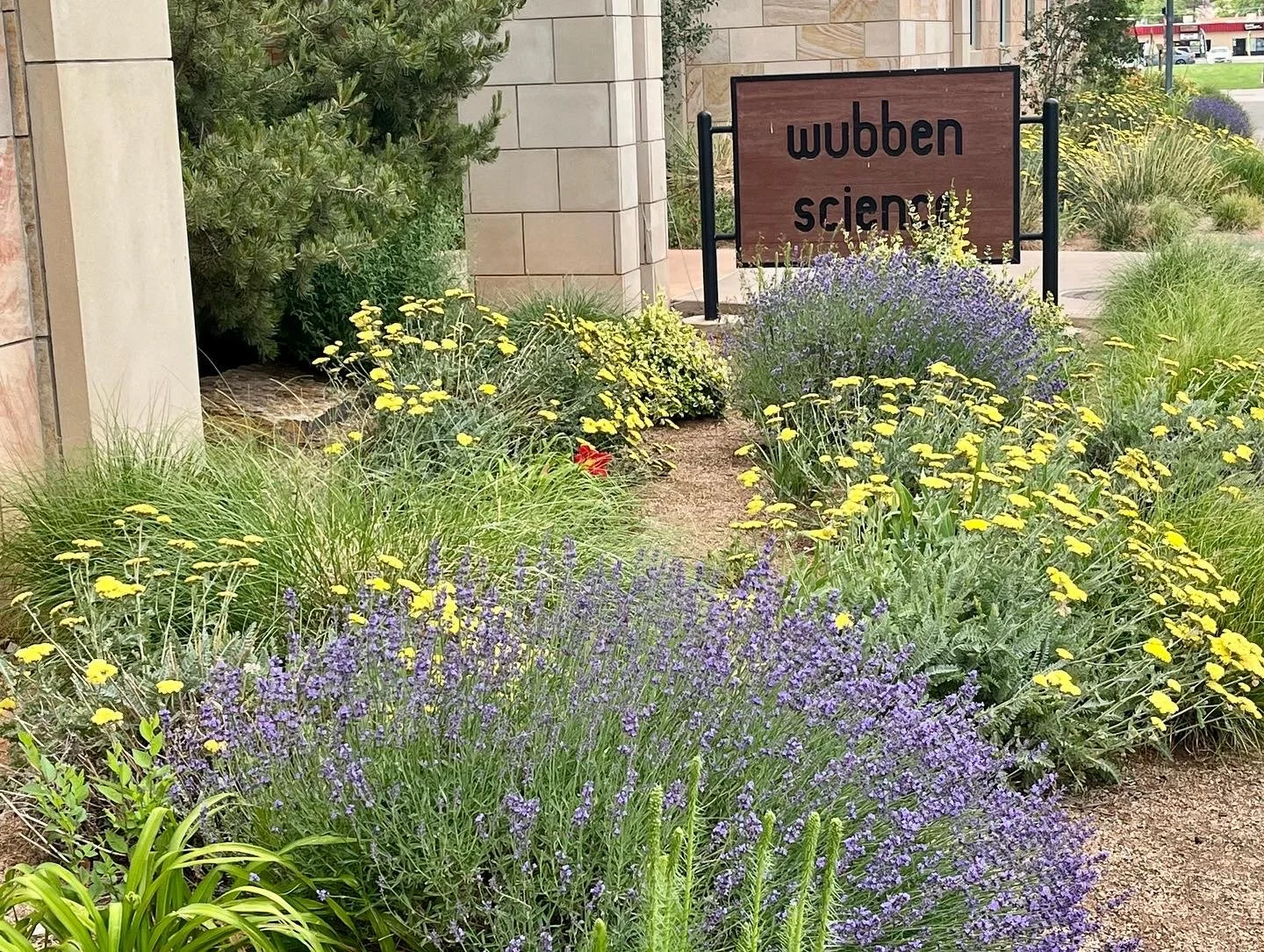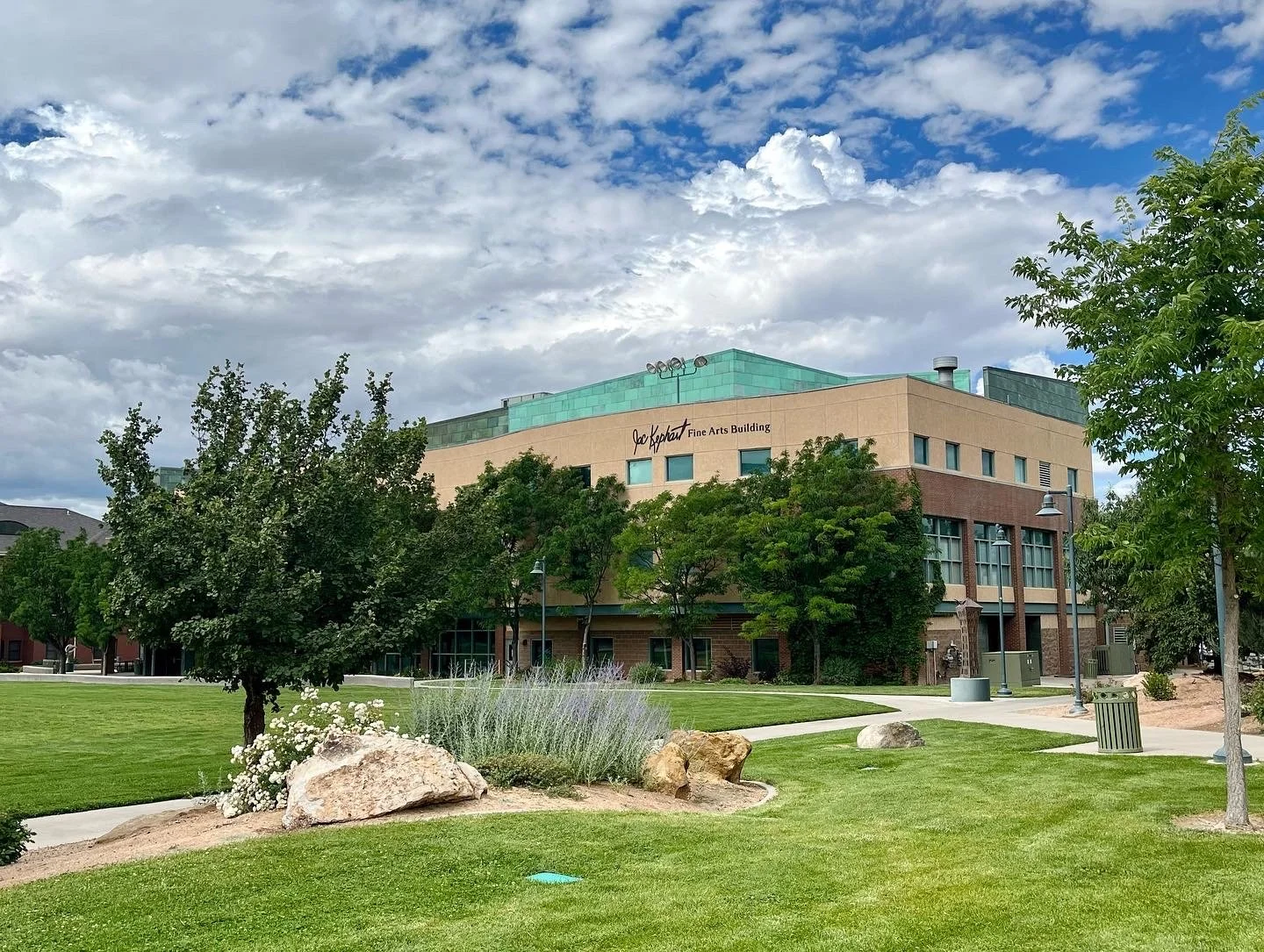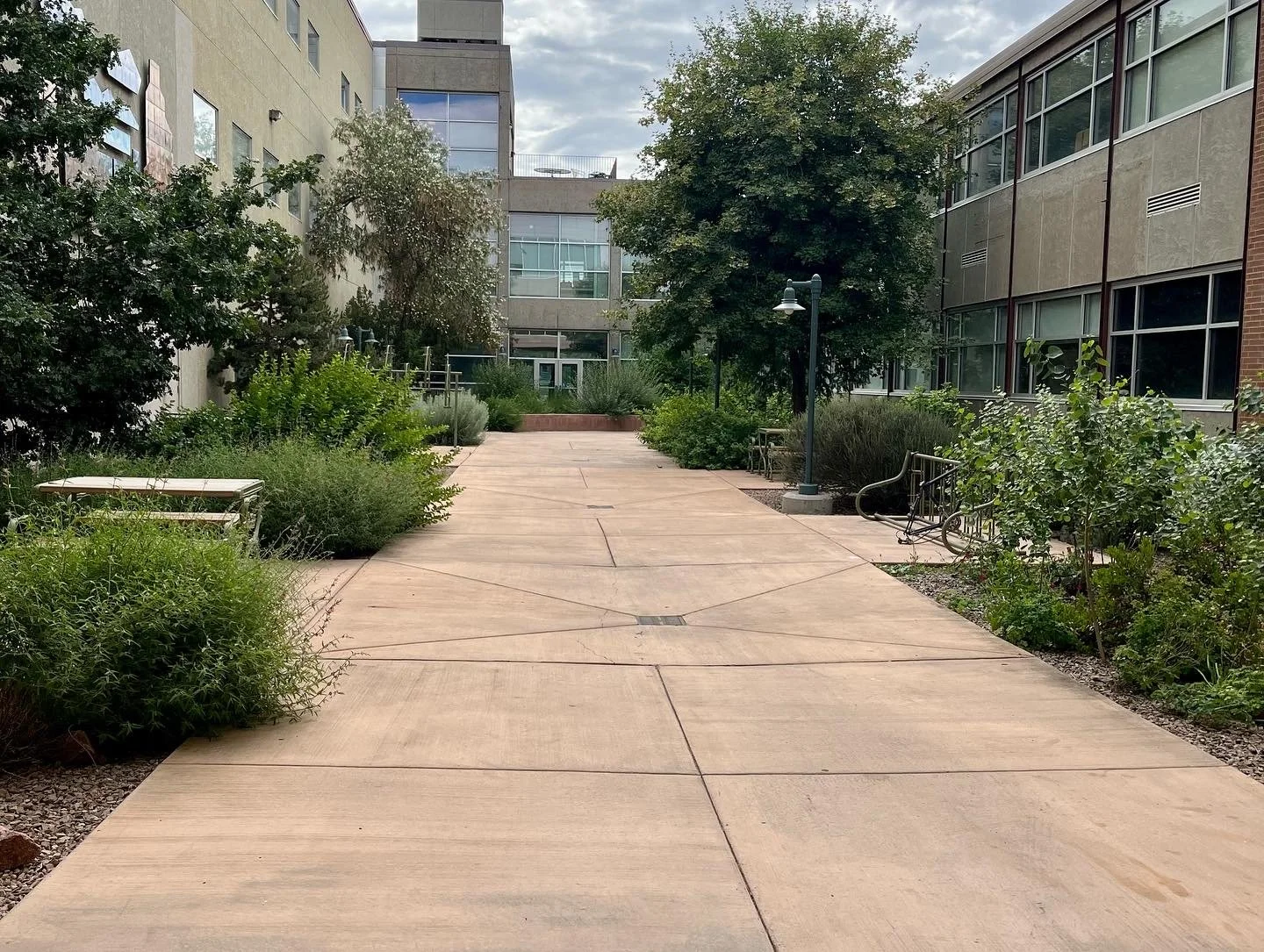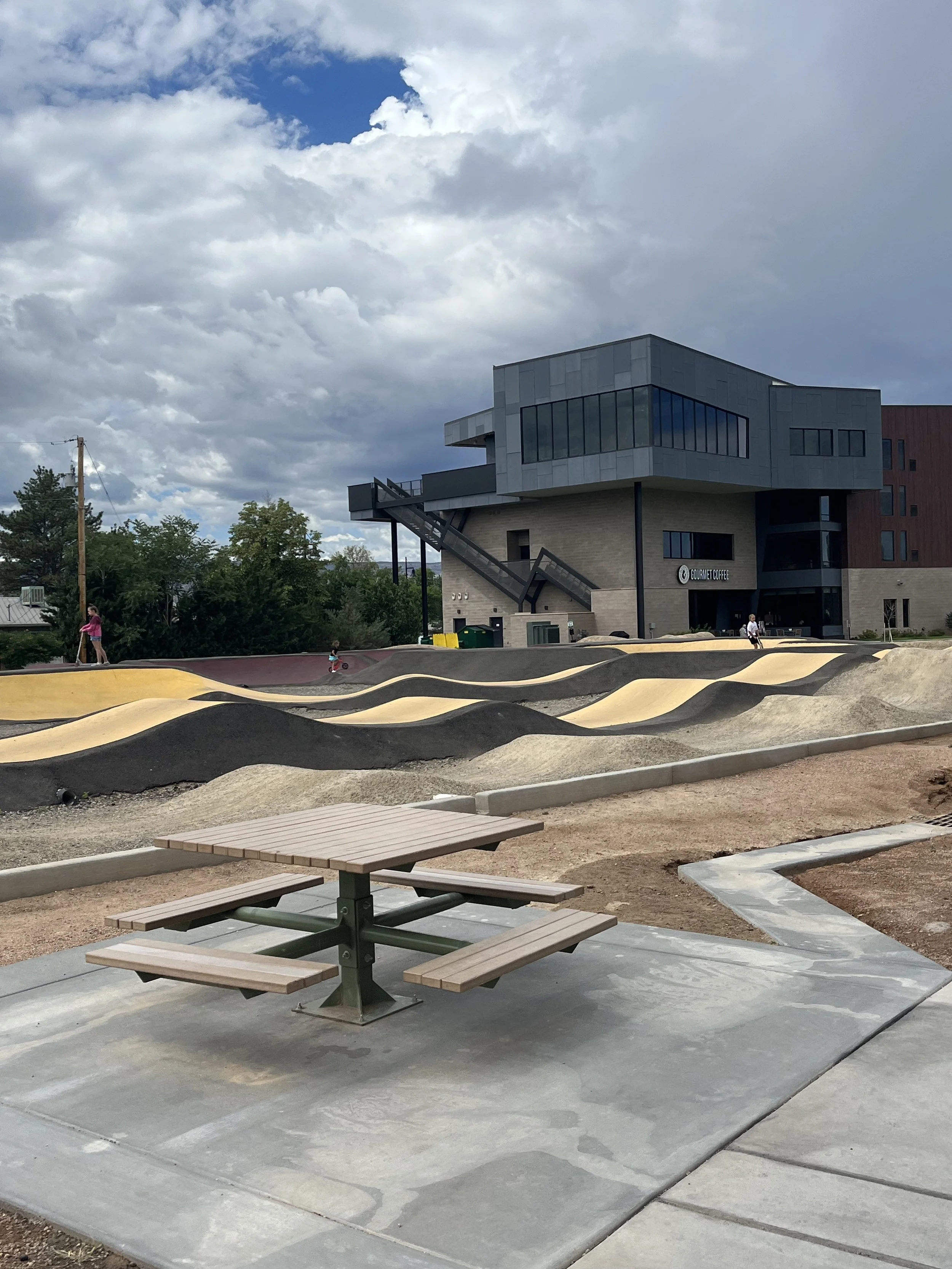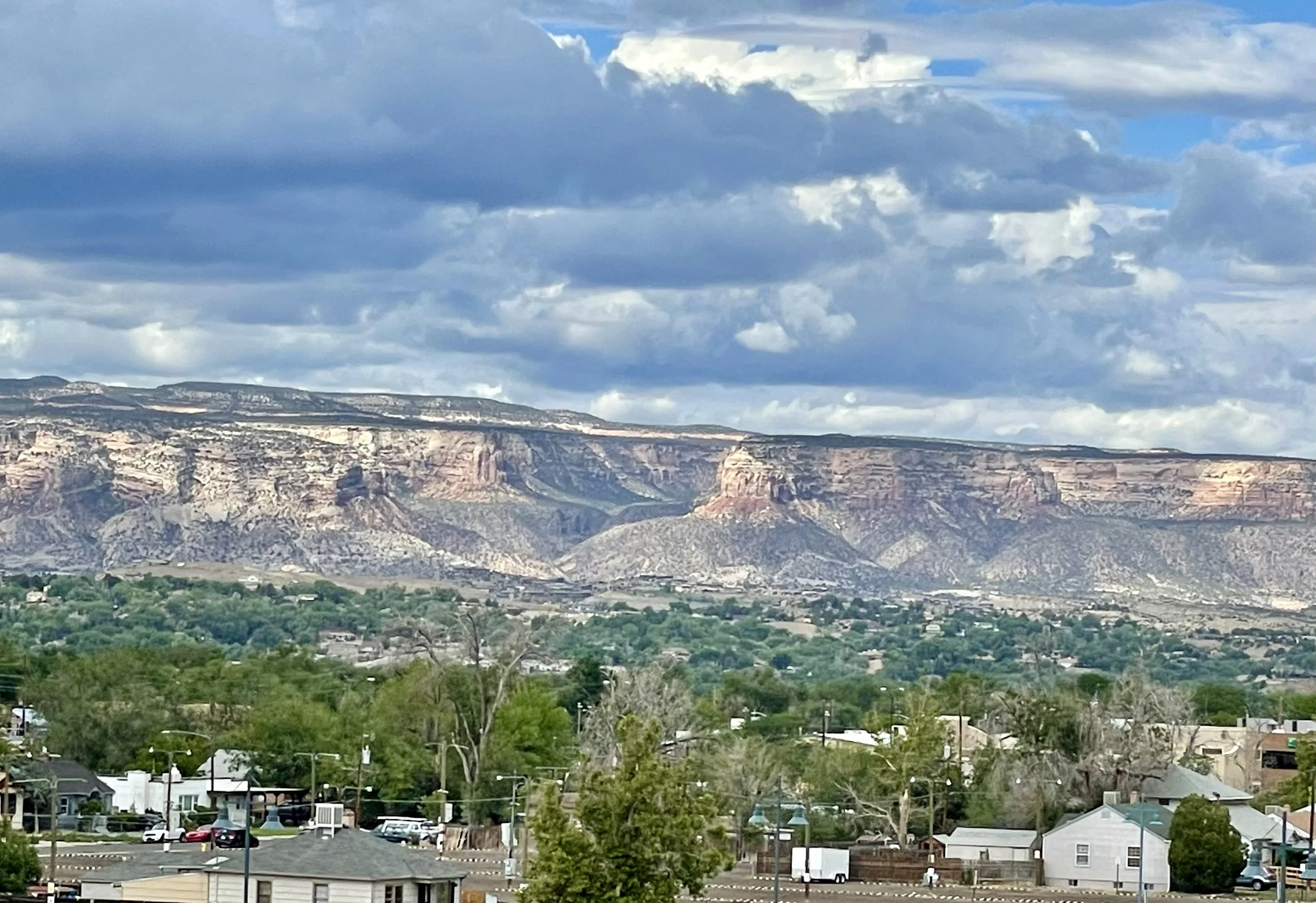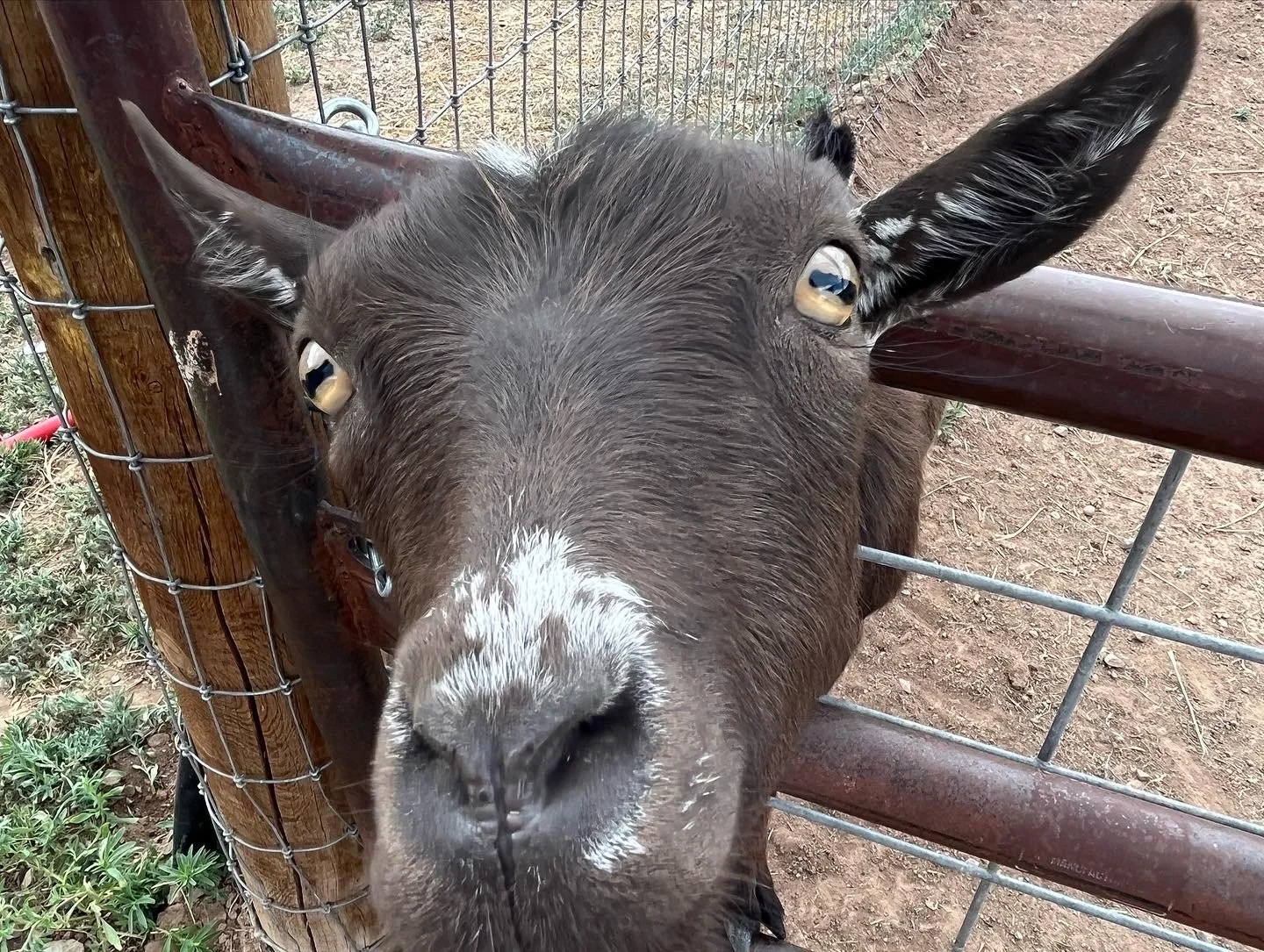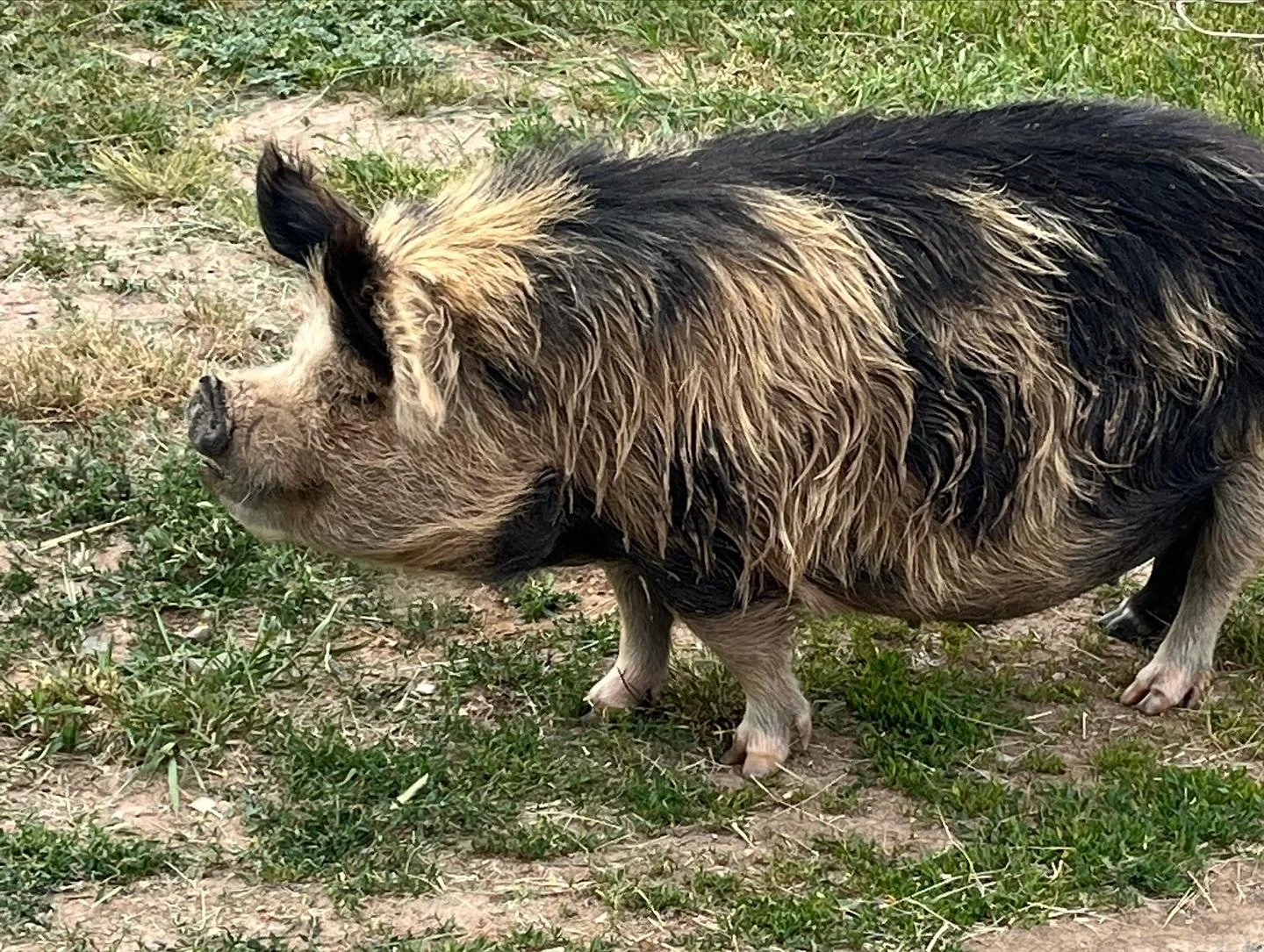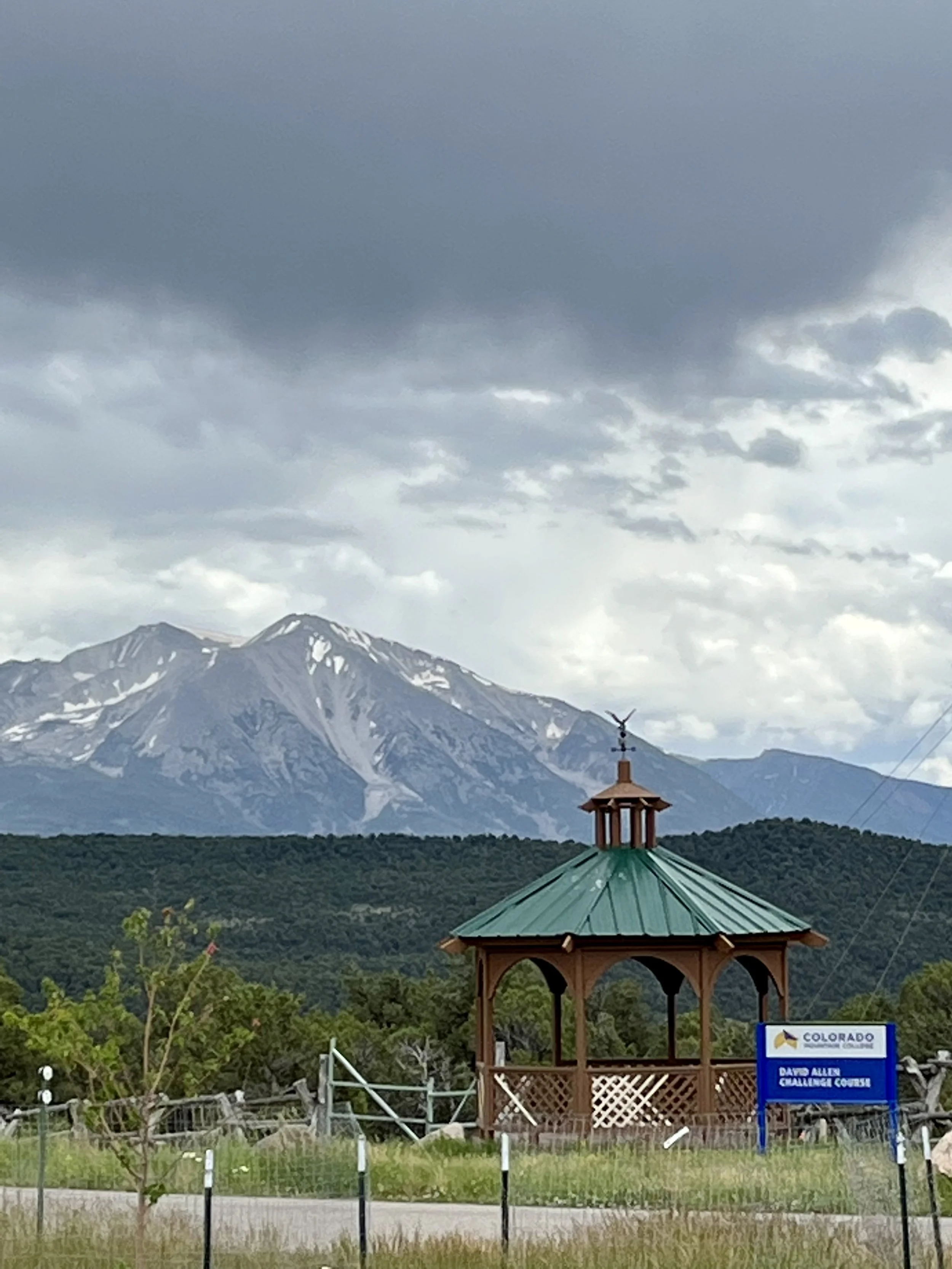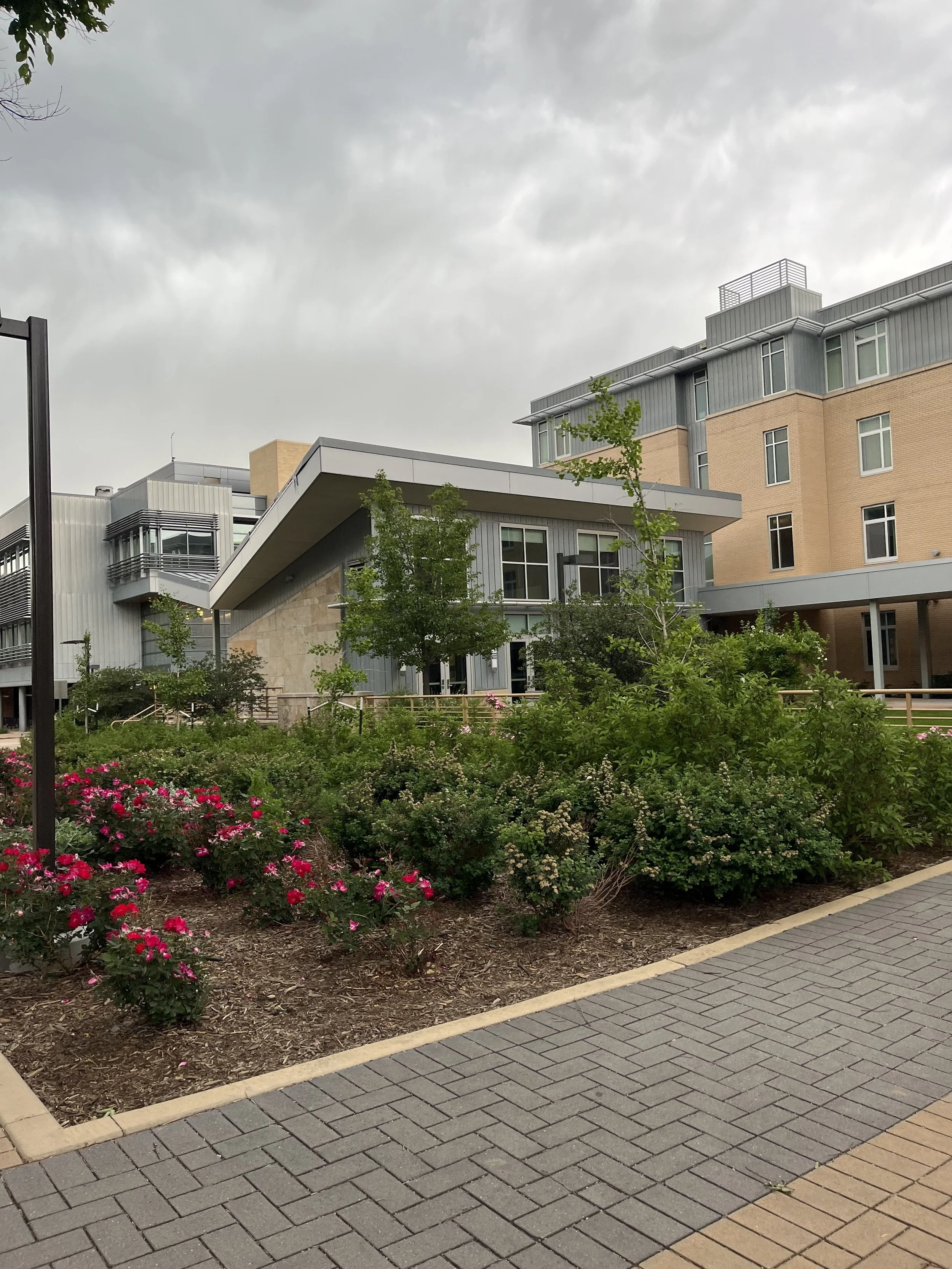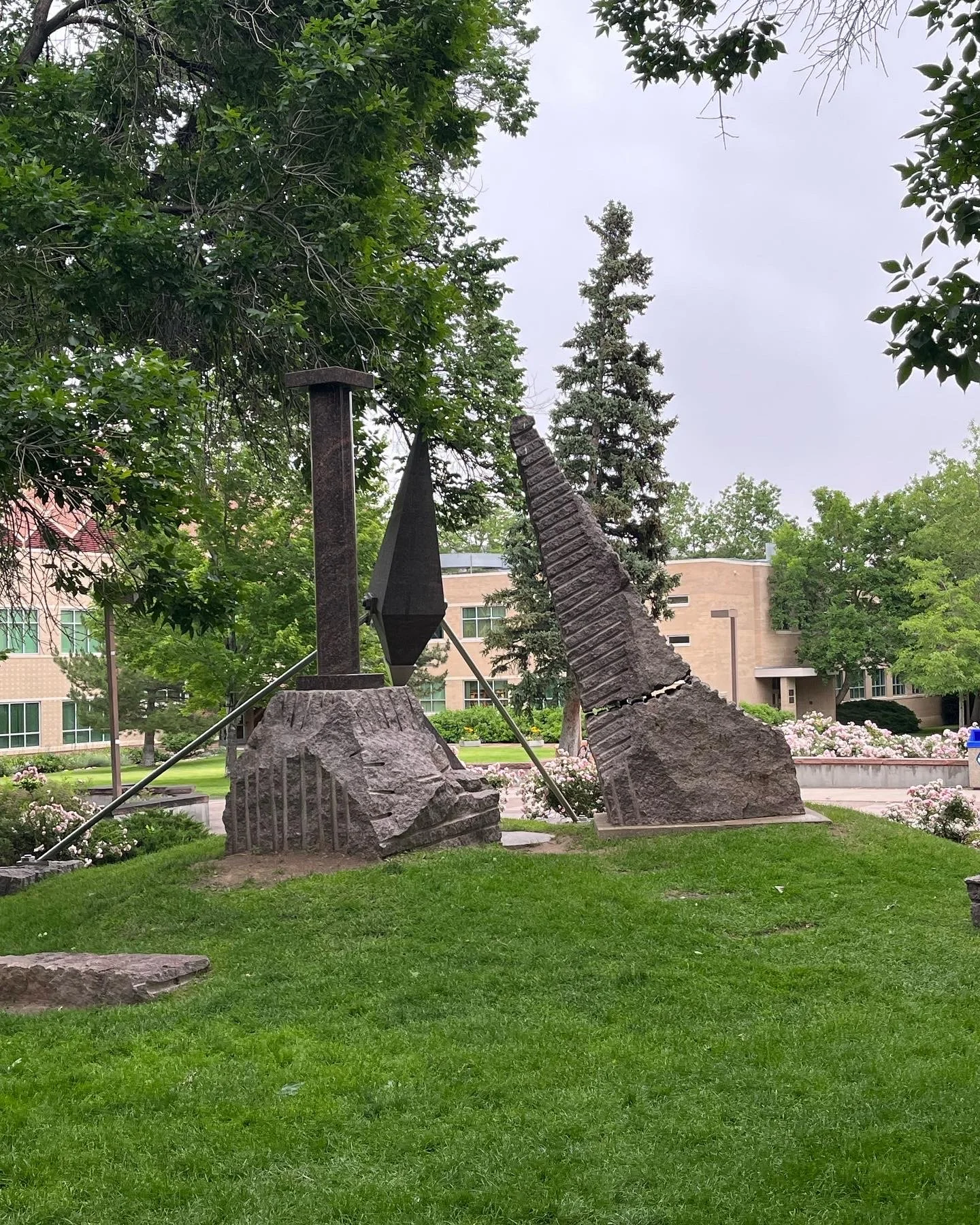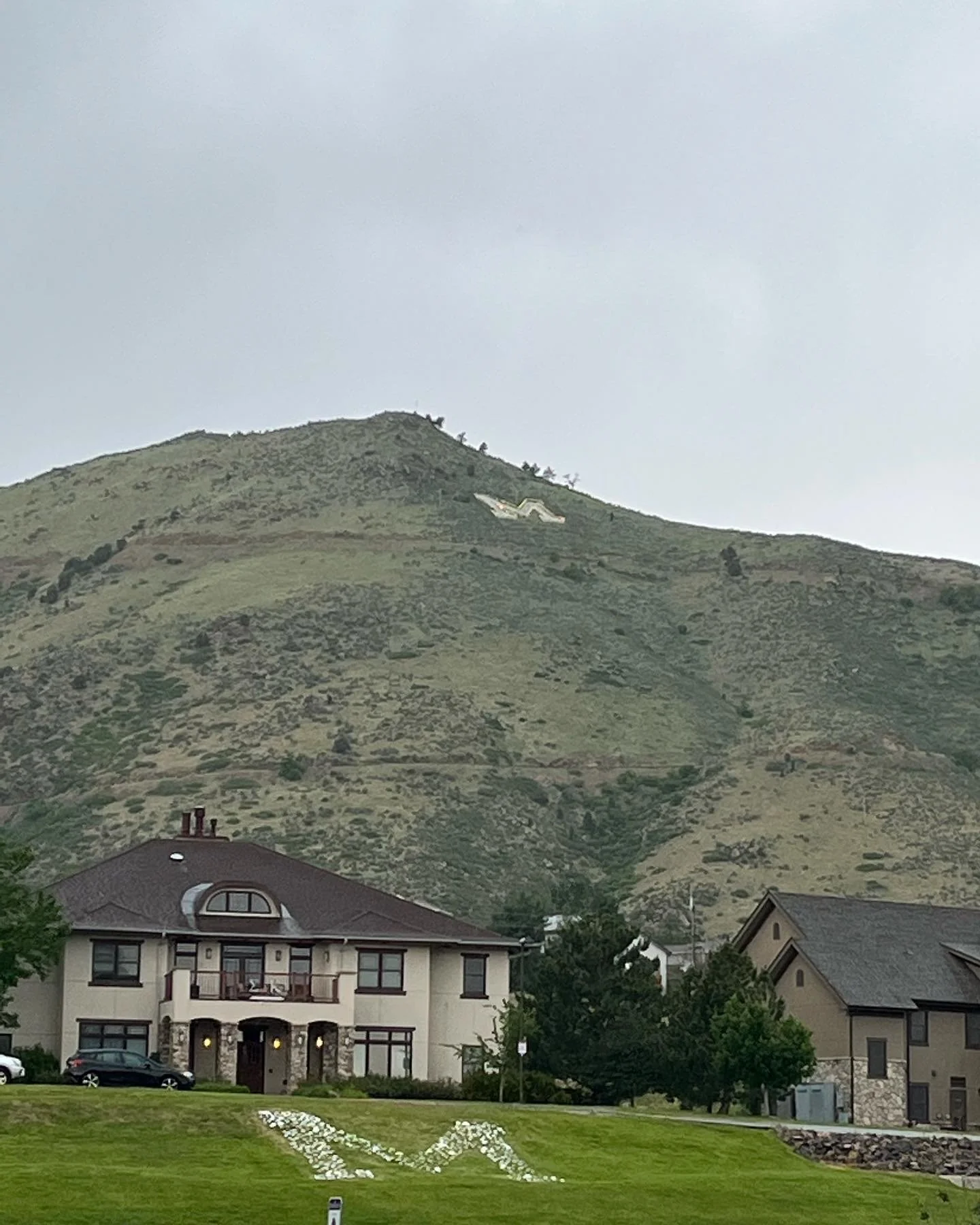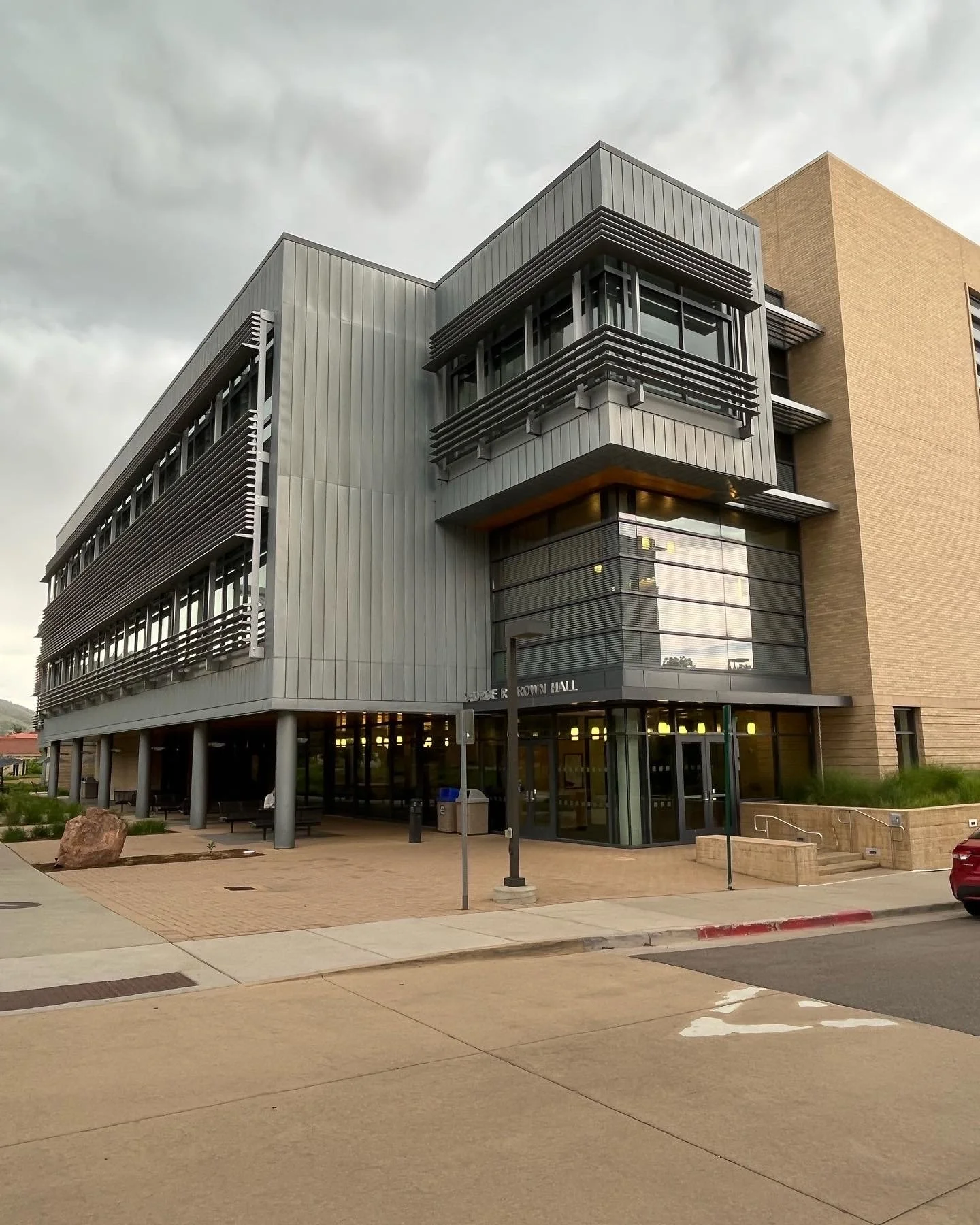Colorado Bus Tour, 2022
I had the pleasure of spending a week visiting some wonderful colleges in Colorado and meeting amazing counselors! The bus tour took us all over the state and included visits to CU Boulder, Western Colorado University, Fort Lewis College, Colorado Mesa University, Colorado Mountain College, finishing up at Colorado School of Mines. Let’s jump in!
University of Colorado Boulder
Boulder, CO
27,000 students
As Colorado’s flagship university, CU’s motto is “Be Inspired” and the large research institution prides itself on being interdisciplinary, environmentally sustainable and energy-efficient, and student-centered. There really is something for everyone and the university is committed to being a more diverse, equitable, inclusive, and anti-racist institution. The 800 acre picturesque campus is set against the flatirons and outdoor adventure awaits mere steps from campus.
What stood out to me immediately is the interdisciplinary approach; with 100+ majors, 50+ minors, 100+ certificate programs, and 30+ Bachelor/Master’s combined programs, students have the flexibility to design their own educational adventure. The Program in Exploratory Studies is ideal for students who start school undecided on a major. The program provides specialized advising support to help students find a pathway that works for them.
There are eight colleges for students to choose from and each also offers an Honors program: Arts & Sciences (the largest with 60% of students), Engineering, Business, Education, Media Communication, and Information (the newest college), Music, and Environmental Design. While CU is probably best known for engineering and business, the Environmental Design college is their hidden gem. Think of it as engineering with a creative twist. This also houses the Architecture program and the Green & Sustainable Technology program.
All first year students are required to live on campus, and that also gives them free access to tutoring and a writing center. Each college has living learning communities (LLCs) that create smaller cohorts. In fact, the school does a fantastic job of creating smaller communities within the larger campus setting.
CU has two application deadlines–the Early Action deadline is November 15, and students will have a decision back by February 1 (and usually by mid-January), and the Regular Decision deadline is January 15. CU only requires one academic letter of recommendation, and they highly recommend that this be from a teacher in the subject area they are pursuing. While CU is test-optional, submitting a score could hurt an applicant. Their motto is “When it doubt, submit without.” In other words, if the scores aren’t in the mid-50% range, don’t send them. Other notable admissions tidbits: they are looking for involvement outside of the classroom, and they do not recalculate GPAs. They’ll review what is sent on the high school transcript.
Last thoughts about CU Boulder: LLCs include LGBTQ+, clear gender inclusive housing and restrooms, lots of ways to get involved in outdoor activities, excellent dining options (clearly labeled and a huge variety, so anyone with any food restrictions should be OK), and there are many rec facilities and classes (including an indoor ice rink that is open to the public).
Western Colorado University
Gunnison, CO
2,900 students
Located in the heart of the Rocky Mountains, Western is a place where students can find their place. Their top values are community, support, and outdoorsy, and I saw these reflected everywhere, from the liberal arts approach to learning, the close relationship with the town of Gunnison, and the abundance of student activities and organizations. About ¼ of the students are first generation, and ¼ are students of color.
I was pleasantly surprised to learn how affordable this school can be, particularly for out of state students. In fact, total direct cost for Texas students is about $28,000/year, not including merit scholarships, which are generous. A student with a GPA of 3.75, for example, (weighted or unweighted) automatically earns $9,000/year (out of state).
Two of the standout programs for me included the engineering partnership with CU Boulder and the accelerated programs. Students in the Rady School of Computer Science & Engineering can major in Computer Science or Mechanical Engineering, take all coursework in Gunnison (with CU professors, who live and work in Gunnison) using the brand new 75,000 square foot state of the art teaching and lab spaces and earn a degree from CU Boulder. Western students benefit from small classes, hands-on, and experiential education, and it’s possible for students to earn a full tuition scholarship for the first two years, with a 630 SAT math and minimum 3.5 GPA (about 6-70% of students earn this scholarship each year). It’s a phenomenal program!
Western offers a variety of 3+2 programs, allowing students to earn a Master’s degree in five years, in areas like Creative Writing, Ecology, Education, High Altitude Exercise Physiology, Environmental Management, and Business, Environment & Sustainability or Recreation & Outdoor Education.
With 300 days of sunshine a year, students spend a ton of time outdoors, taking advantage of the beautiful spaces from volleyball courts to an indoor climbing wall, and students have access to all outdoor equipment they could possibly need. Students have access to funding for different initiatives and definitely take advantage of that!
Student support services are especially strong, and include an exploratory program for students who are undecided in a major, counseling services, a multicultural center, and all incoming students are paired with an Experienced Peer Initiating Connections (EPIC) mentor to guide them through the summer and first year at Western.
Sports are big here, with 20 NCAA Division II sports, along with a healthy dose of club and intramural sports. Some unique clubs and student organizations include Mountain Rescue Team, Paranormal Pursuits, Roller Derby Club, and Urban Gaming. And if you don’t find something you like, start a club! Western offers more than a dozen leadership opportunities on campus and is also focused on sustainability, committing to being a zero waste campus.
This is an ideal place for students who are looking for community, small classes, personal relationships with professors, hands-on learning and coursework, and who love the outdoors.
Fort Lewis College
Durango, CO
3,500 students
Fort Lewis College is situated on a mesa overlooking the beautiful mountain town of Durango, Colorado. It’s an ideal location for students who love outdoor activities (300 miles of hiking/biking trails connecting you to the stunning Colorado mountains and forests) and who are looking for hands-on, experiential learning. Top programs include STEM, Psychology, Business, Geology, Adventure Education, and Anthropology. An excellent school for LGBTQ+ students and those students looking for more diversity, in general.
I was totally impressed by the immersive Borders & Language program, where students focus on communicating within culture and study immigration law, Latinx literature and gender studies, rather than just grammar and vocabulary. These students leave with the ability to genuinely communicate across borders.
Fort Lewis College is known as Colorado’s public liberal arts college. What also helps FLC stand out is its commitment to diversity and inclusion. Designated as a minority serving institution, about ⅔ are students of color, 42% are Native American or Alaska Native representing 185 Tribes and Native Alaskan villages, and ⅓ are first generation students. The school is incredibly intentional about first gen student support. I was impressed.
Native students attend FLC entirely tuition-free; FLC is designated as one of six Native American-serving non-tribal colleges by the USDOE and as such awards more degrees to Native American students than any other four year baccalaureate-granting institution in the country.
For students who want to be involved in athletics, FLC is home to 14 NCAA Division II sports teams, and also offers a wide array of intramural and club sports (including competitive cornhole) and currently boasts the #2 mountain biking team in the nation. The campus is located within two hours of five major ski resorts, and students have access to any outdoor gear they might need. If sports aren’t your thing, the college has 60+ student clubs (including everything from social dance to diversity collaborative to fly fishing club), and students all receive a free bus pass to get around Durango.
All students are required to live on campus the first year, and FLC offers a variety of housing options, including gender inclusive, as well as Living Learning Communities and apartment-style living.
The biggest surprise for me was the reasonable cost for out of state students. With no aid, the total direct costs are about $31,000/year, similar to in-state costs for Texas public schools. All applicants are automatically considered for merit aid, and it ranges from $6,000 - $10,000 per year, bringing the cost below the Texas in-state costs (potentially).
The mid-50% GPA is 3.04-3.79. Test scores, letters of recommendation, and essays are all optional, but would be helpful for students “on the cusp” of an acceptance. I love that this is not a stretch school for many students, but has a tremendous amount of offerings, including an incredibly strong honors program for high-achieving and highly motivated students.
Current students love the small class sizes, the close attention that started with the admissions staff and continues to each professor, and that the President hangs out with and knows the students. The school is intentional about personalized learning through the “Academic Circle,” where students start with a community of mentors, and engage in hands-on activities like research, field studies, and service projects. Students are using the local landscape as a laboratory for all fields of study. Students are also encouraged to build their own education through flexible options like double majoring, adding a minor, or multiple certificates.
The entire staff was welcoming, gracious, and the energy I felt on campus was electric! This is a place where students and staff love being, and it was evident every second of this visit!
Colorado Mesa University
Grand Junction, CO
11,000 students
In the high desert of Colorado, near the Utah border, is possibly one of Colorado’s best kept secrets. Nestled along the Colorado River and next to flattop mountains, CMU is a sometimes hard to find “medium-sized” school. The most recent President retired after 17 years and doubled the student population. With that came brand new buildings, state of the art labs, and a recently opened 4-star boutique hotel on campus. It is truly an extraordinary space.
CMU students hail from 33 countries and 49 states, and about ⅓ are from underrepresented groups. The top 5 majors of incoming students are Business, Nursing, Journalism, Biology, Criminal Justice, and Kinesiology-Exercise Science. There are ZERO teaching assistants–all classes are taught by professors and 89% of classes have fewer than 40 students. CMU also has a partnership with CU Boulder for Civil, Mechanical, and Electrical/Computer Engineering. Students remain on the CMU campus all four years and earn their engineering degree at CU Boulder.
New programs include several Master’s degrees: Physician Assistant, Criminal Justice, Occupational Therapy, Doctor of Physical Therapy, and Social Work (pending accreditation). New undergraduate programs include a BS in Outdoor Recreation Industry Studies and BS in Radiologic Sciences. New learning spaces include the Hotel Maverick (which I highly recommend), Health Sciences North, Confluence Hall, Robinson Theater (the only performance space between Salt Lake City and Denver), and the Maverick Pavilion Expansion.
CMU is a very affordable option, both for in-state and out-of-state students, and they are willing to stack discounts along with merit aid. In fact, they encourage students and families to speak with their counselor at CMU to appeal for additional aid–they work hard to make it affordable for everyone.
Mavericks participate in 26 NCAA Division II sports, including the #1 BMX team in the country. The newest sports are triathlon and women’s wrestling. There are 120+ student clubs, 2,000+ student-run events each year, and free access to the Rec Center, Natatorium, Climbing Wall, and group exercise classes. CMU has the highest percentage of student-athletes in Colorado (behind the Air Force Academy). And with direct access to the Colorado River and thousands of miles of hiking and biking trails, the Outdoor Program is a great way to get out there and enjoy the beautiful landscape, during one of the 80 student-led weekly activities and 75 weekend trips.
The housing options include everything from traditional dorm styles to brand new apartments with full size beds! There are 18 different dining options. Students are required to live on campus the first two years, but many move off campus after that. Grand Junction offers affordable housing options near campus.
CMU has intentional and purposeful student support programs, including robust tutoring services, strong support for students with learning differences, career services, mental health support, and peer tutoring. This is a place dedicated to helping all students succeed.
Both students and staff describe CMU and Grand Junction as “purple” but maybe leaning a little red. The philosophy seems to be fairly neutral when it comes to hot issues. During the pandemic, CMU stayed open, and never required masks. Their approach is more “let people do what they would like” but there is a healthy level of respect towards each other, which is refreshing.
A little side note–Palisade is a small wine-country town, about 20 minutes from campus, where you can explore more than 30 wineries, and even take a wine tour on a horse-drawn carriage. A CMU alum owns that business and made the experience memorable. ♥️
Also of note–there is a regional airport in Grand Junction, just 10 minutes from campus.
Colorado Mountain College
Glenwood Springs, CO
5,800 students (all 11 campuses total)
This was a total surprise campus for me! Colorado Mountain College (CMC) has 11 campuses around the state, and three are residential campuses. Our first stop on the campus tour was on the farm, where I met a variety of animals, including pigs, goats, horses, llamas, sheep, ducks, and an eagle.
Imagine going to school to be a vet tech (think nursing, but for animals) and you actually get to work on animals! In addition to the large animals, there is a dog/cat rescue facility on site, where they treat the animals and help to adopt them out to loving homes.
The main campus is small but mighty. From a newly renovated dorm that houses 258 students, to a completely redesigned student union building, to a brand new outdoor leadership center and field house, there is something for most students.
Some of the standout two year programs are Veterinary Technology, Outdoor Recreation Leadership, Professional Photography, and Nursing. Students have access to in-the-field learning opportunities, study abroad trips, and state of the art facilities located minutes away from spectacular fishing, hiking, climbing, skiing, and other outdoor adventures on the Western Slope.
While many of the programs are two year Associate’s degrees, CMC offers pathways to Bachelor's degrees in Outdoor Education, Business, Biology, Addiction Studies/Psychology, Environmental Studies, and Health Sciences (Allied Health and Nursing).
The biggest benefit of attending CMC is probably the cost. As one of Colorado’s most affordable options, these campuses draw students from down the street and all over the world. Total direct cost for out of state students is about $25,000 (including room/board) and there are generous scholarships available as well. I learned that each of the public schools in Colorado do NOT have the same tuition costs; CMC is 38% less expensive than the average four year school in CO.
This is a fantastic school for students who like being outdoors, prefer small classes, want hands-on and interactive learning opportunities, and desire a community that embraces diversity. No essays and no application fees here.
Colorado School of Mines
Golden, CO
5,200 undergraduate students
While I loved visiting each of the colleges on this trip, I was particularly eager to see Mines, and the visit did not disappoint. Colorado School of Mines is a public research university focused on science and engineering, where students and faculty together address the great challenges society faces today—particularly those related to the Earth, energy and the environment.
This is a STEM institution through and through, and students are all standouts who come here to collaborate. Mines top values are respect, diversity, collaboration, and compassion. About 31% of students are women, and they are aiming to increase that to 40%, and Mines has the largest chapter of Women in Engineering. While 30% of students are non-white, the school is actively trying to diversify even more. Mines graduates are consistently at the top of Return on Investment and financial mobility studies.
Money Magazine recently ranked Mines as the #3 engineering school in the U.S., only behind MIT and Georgia Tech, and Mines is proud of what it has to offer. The Signature Experiences (true hands-on and immersive) include the Cornerstone, Field Session, Research (with funding available), and the Capstone. Cornerstone Design includes two 3-credit courses with the centerpiece being students working as a team to solve an open-ended design problem. By finding solutions to real-world problems, students apply their technical knowledge in practical ways—all before heading out into the workforce. No idea is off the table. Creativity is encouraged. And students have every opportunity to make a difference—all while having fun, of course. The Capstone Design allows students to work with clients to develop a product from inception to completion, or sometimes design a product for competition.
While the majority of majors are in some kind of engineering, students are passionate about creating their community. It’s very much a “work hard/play hard” environment, and it isn’t unusual to see future engineers who play varsity sports, roller skate, are outdoor enthusiasts, and of course, are rocket scientists. With 220+ student organizations, community service activities and study abroad experiences, Orediggers have endless opportunities.
Student life includes 18 NCAA Division II sports teams, 12 performance ensembles, 25+ hiking trails, 12 ski resorts within 90 minutes, a few fraternities/sororities (nothing like Greek life in the SEC), and 9 residence halls with a variety of living, learning communities. One of the favorite traditions as an incoming student is to hike up to Mt. Zion with a 10 lb rock from their hometown, all while being cheered on by faculty and older students.
One HUGE change in the application process is that the September 15th priority application date is GONE! The new priority application deadline is November 1, and students will hear back by December 21. Whew.
I appreciated how transparent the admissions staff was when discussing how they review applications. No surprise that HS rigor and performance over time are at the top of the list. But context matters. Other really important factors are a student's interest in STEM and in Mines, activities/involvement outside of the classroom (including things like taking care of siblings, working part time, etc.), and giving as much context as possible. Tell them everything! Demonstrated interest matters–why are you interested in Mines? Show them that you like them and have done your research. And definitely answer the “optional” short response questions. Required HS curriculum includes Trig/PreCalc, Chemistry, and Physics (minimum).
Mines is truly test optional, both for admissions and awarding merit aid. Last year, 60% of applicants submitted scores, and about 60% of accepted students submitted scores. One other important detail is that all decisions are subject to final senior year grades, so it is important to maintain the strong trajectory senior year. The average unweighted GPA is 3.8-4.0, and the mid-50% test scores that were submitted were 1350-1490 (SAT) and 30-34 (ACT).
One other application note–applying undecided is GREAT! 65% of students don’t know, or will change their mind, and they know this. Don’t choose Mechanical Engineering, for example, unless you know for certain that’s what you want. The curriculum is basically the same for all first year students, so go in with an open mind and take the opportunity to explore. They know you want engineering. You don’t have to pick an area of specialty right away. It’s all good.
Merit aid–there is no additional application; all applicants will be automatically reviewed. New information can be submitted until March 1, and awards can be adjusted upwards. Scholarships range from $8k-$14k/year, and students can apply to be a Harvey Scholar, which covers full tuition and fees for all four years, as well as additional enrichment and travel grants; this is open to both in-state and out-of-state students.
Mines is located in Golden, a vibrant town with fantastic restaurants, cafes, shops, museums, and music venues, and the light rail will drop students off in Denver. It’s a beautiful location with access to just about everything, and definitely worth a visit!
